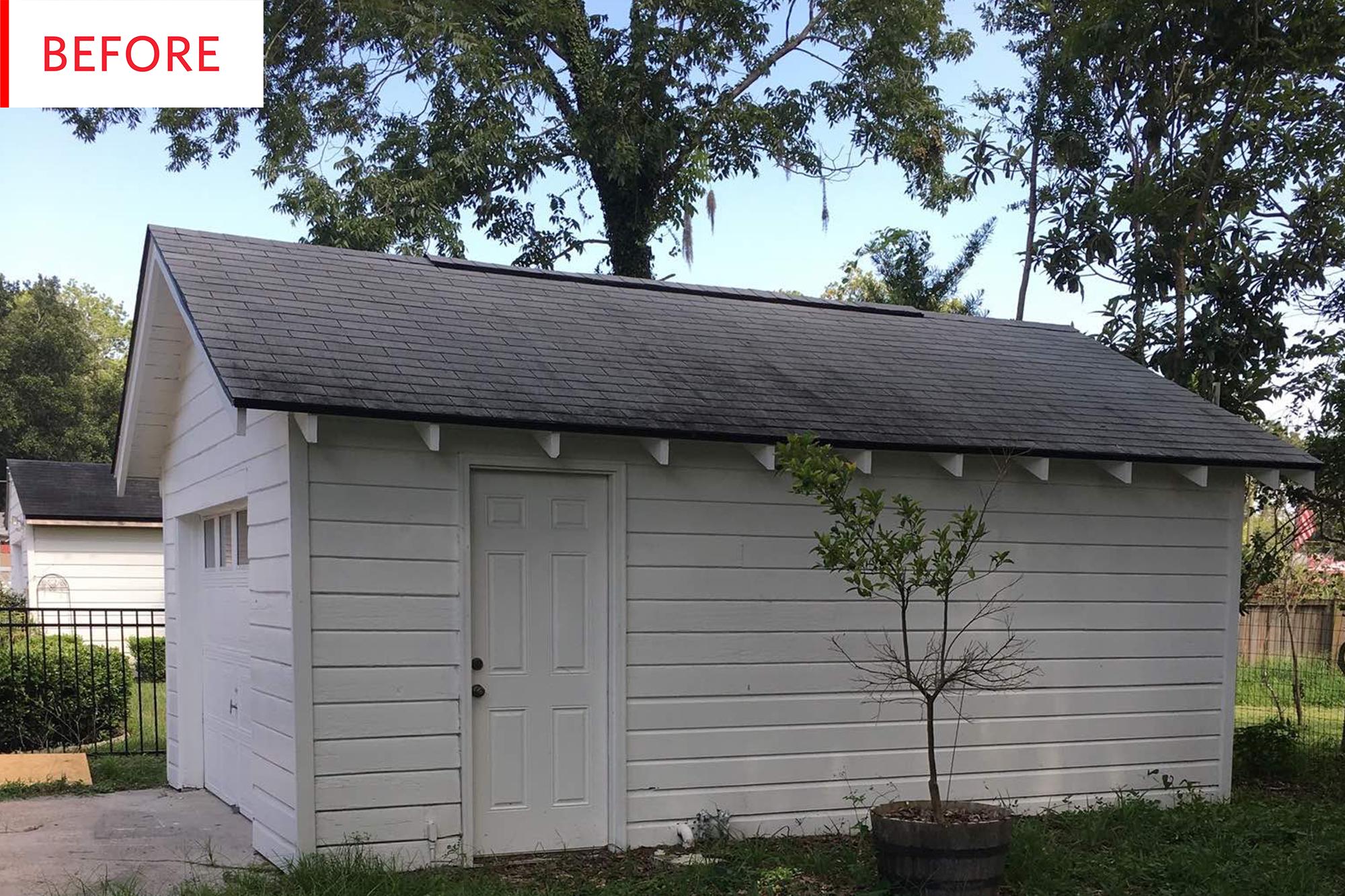
One story house plans without garage offer a range of design possibilities for homeowners who don't want to build an attached garage. They are also great for builders looking to maximize the potential of large lots without building a full garage.
Single-story house plans without garages are popular for retirees and young families. These houses have a heated living area above grade, some with basements, and are suitable for sloped lots.
Ranch home designs are a American classic. The 1 story ranch version of these homes is a modern, traditional layout that fits within the traditional architectural style. They are great for first-time home buyers, down-sizing Boomers, or other age groups that want a flexible, stylish and easy-to maintain home plan.

Barndominiums are another great option for one-story home designs that offer flexibility in floor plan layout. These open-concept structures make a great choice for larger families, hobbyists or anyone who enjoys spending their time outside. They are also an excellent choice for people who enjoy entertaining guests and hosting parties.
Beach houses are another popular choice for one story home plans that emphasize outdoor living, and they're especially appealing to those who enjoy vacationing on the beach. These houses typically have wrap-around porches so you can take in the outdoors on sunny or cool evenings.
If you want a home that has a distinctive look, you might consider a sundeck instead of a traditional balcony. Sun decks are a less common variation of the classic balcony or deck, and they can be a great addition to your home.
The house plan below is an example of a unique one-story home that has an elevated foundation, which gives the property a beautiful view and helps keep the roof from becoming damaged by rain. This type of foundation is great for homes that are built on a steep lot. You can use either wood pilings, or concrete pilings.

Designed by Design Basics, this 2500 square foot ranch house plan has plenty of classic ranch features to offer a timeless and cozy design. The floor plan is spacious and includes a rich display of windows that bring the outdoors in. The great room is the center of the home and opens to the dining area and kitchen. The master suite can be separated from both the other bedrooms.
This home is a great example of how you can create your backyard paradise using one-story house plans that don't require a garage. This home is perfect for entertaining. It has a covered patio, an outdoor kitchen, and a large covered porch.
Be sure to verify your local zoning laws when choosing a floor plan. You might be prohibited from using certain features by zoning laws. If you follow the rules you can avoid costly fines.
FAQ
How much would it cost to gut a home vs. how much it cost to build a new one?
A home gutting involves the removal of all interior items, including walls, floors ceilings, plumbing and electrical wiring, fixtures, appliances, and fixtures. It is often done when you are moving to a new location and wish to make some improvements before you move in. It is often very costly to gut a home because of all the work involved. Depending on your job, the average cost to gut a home can run from $10,000 to $20,000.
Building a home means that a builder constructs a house piece by piece, then adds windows, doors, cabinets and countertops to it. This is typically done after purchasing lots and lots of lands. It is usually cheaper than gutting a house and will cost around $15,000 to $30,000.
It comes down to your needs and what you are looking to do with the space. You'll need to spend more if you plan to gut your home. If you're building your home, however, you don't have to tear everything down and start over. You can build it the way you want it instead of waiting for someone else to come in and tear everything up.
What order should you renovate an existing house?
The roof. The plumbing follows. Third, the electrical wiring. Fourth, walls. Fifth, floors. Sixth, the windows. Seventh are the doors. Eighth, the kitchen. Ninth, the bathrooms. Tenth, garage.
Once you've completed these steps, you can finally get to the attic.
Hire someone to help you if you don't have the skills necessary to renovate your home. It takes patience, time, and effort to renovate your own home. It can also be expensive. Don't be discouraged if you don’t feel up to the task.
Renovations are not always cheap but can save you lots of money in long-term. A beautiful home can make your life easier.
How much does it cost for a complete kitchen renovation?
You might be wondering how much it would cost to renovate your home.
The average kitchen renovation cost is between $10,000-$15,000. There are ways to save on your kitchen remodel while still improving the space's look and feel.
You can cut down on costs by planning ahead. This includes choosing the design style and colors that best suits your budget.
Another way to cut costs is to make sure that you hire an experienced contractor. A skilled tradesman will know exactly what to do with each stage of the construction process. This means that he or she won’t waste time trying out different methods.
It would be best to consider whether you want to replace or keep your existing appliances. Remodeling a kitchen can add thousands of pounds to its total cost.
You might also consider buying used appliances over new ones. Buying used appliances can help you save money because you won't have to pay for installation.
It is possible to save money when you shop around for materials, fixtures, and other items. Many stores offer discounts during special events, such as Black Friday or Cyber Monday.
What should I do to my existing cabinets?
It all depends on whether or not you plan to rent your home out. You'll need to remove the cabinets and refinish them if you plan to sell. This gives buyers the illusion of brand-new cabinets and helps them visualize their kitchens after they have moved in.
However, if you want to rent your house, you should leave the cabinets alone. Many renters complain about the dishes that are dirty and the greasy fingerprints left by tenants.
You can also consider painting the cabinets to make them look newer. Use a high-quality primer. Low-quality primers and paints can crack easily.
How can you tell if your house needs renovations or a remodel?
First, check to see whether your home was updated in recent years. If you haven't seen any updates for a few years, it may be time to consider a renovation. You might also consider a remodel if your home is brand new.
The second thing you should check is whether your home is in good condition. A renovation may be necessary if your home has holes in its drywall, cracked wallpaper, or missing tiles. But if your home looks amazing, maybe it's time for a remodel.
The general condition of your home is another important factor. Is your house structurally sound? Do the rooms look good? Are the floors clean and tidy? These questions are critical when deciding what type of renovation you should do.
What's included in a complete kitchen remodel?
A complete kitchen remodel involves more than just replacing a sink and faucet. There are also cabinets, countertops, appliances, lighting fixtures, flooring, plumbing fixtures, and much more.
A complete kitchen remodel allows homeowners the opportunity to upgrade their kitchens without any major construction. This means that there is no demolition required, making the process easier for both homeowner and contractor.
There are many services that can be done to your kitchen, including plumbing, electrical, HVAC, painting, and carpentry. Depending on the extent of the kitchen remodel, multiple contractors may be required.
Hiring professionals who are familiar with kitchen remodeling is the best way for it to go smoothly. Many moving parts can cause delays in kitchen remodels. DIY kitchen remodels can be complicated. Make sure you have a plan and a backup plan in case of an emergency.
Statistics
- 55%Universal average cost: $38,813Additional home value: $22,475Return on investment: 58%Mid-range average cost: $24,424Additional home value: $14,671Return on investment: (rocketmortgage.com)
- Windows 3 – 4% Patio or backyard 2 – 5% (rocketmortgage.com)
- 5%Roof2 – 4%Standard Bedroom1 – 3% (rocketmortgage.com)
- 57%Low-end average cost: $26,214Additional home value: $18,927Return on investment: (rocketmortgage.com)
- According to a survey of renovations in the top 50 U.S. metro cities by Houzz, people spend $15,000 on average per renovation project. (rocketmortgage.com)
External Links
How To
How to Remove Tile Grout from Floor Tiles
Most people don't know that tile grouting exists. It seals the joints between tiles. Many different types of grout are available today, each using a specific purpose. This article will teach you how to remove tile grout off floor tiles.
-
Before you begin, make sure you have everything you need. A grout cutter, grout scraper and some rags are all essential.
-
Now, you will need to remove any dirt or debris from under the tile. You can use the grout cutter to remove grout from the tiles and scrape off any remaining pieces. Be careful not to damage any of the tiles.
-
After cleaning up all the grout, you can use the grout scraper to remove any remaining grout. Step 4 can be completed if you have no grout.
-
Now you can get on with the next step. Soak one of your rags in water. Make sure the rag is fully wet. Once the rag is wet, you can dry it by wringing the cloth.
-
Place the wet cloth on the joint where the tile meets with the wall. Keep the rag in place until the grout starts to separate. Slowly pull the rug towards you, then continue pulling the rag back and forth until the grout has been removed.
-
Continue repeating steps 4 through 5 until all grout is removed. Rinse and repeat the procedure if necessary.
-
Once you have finished removing all the grout, wipe down the surface of the tiles with a damp cloth. Let dry thoroughly.